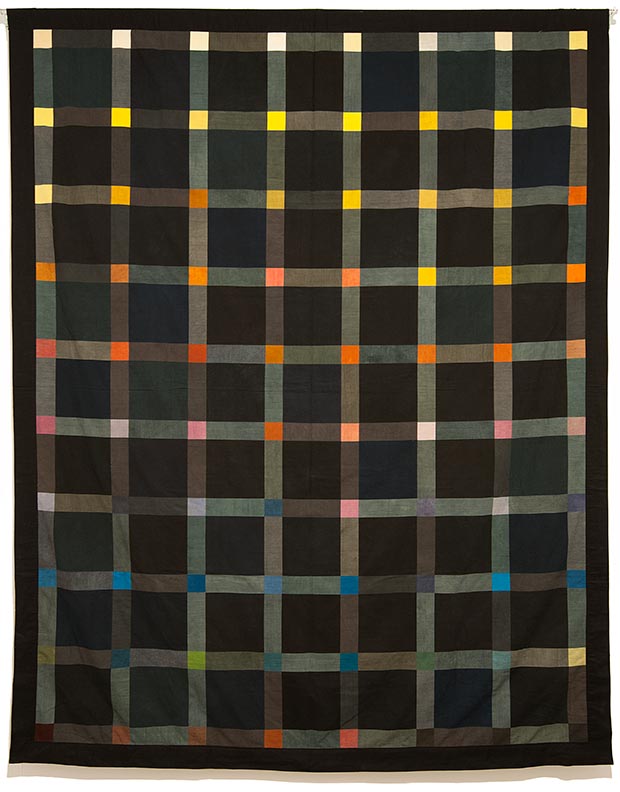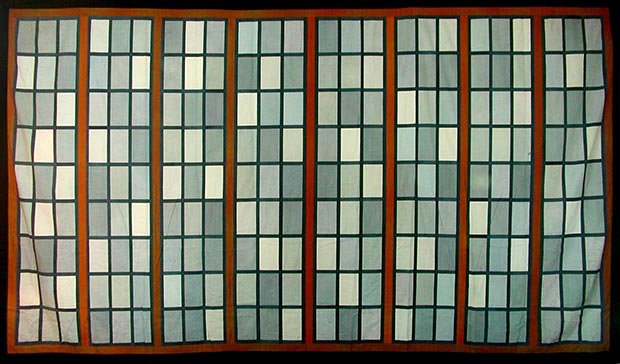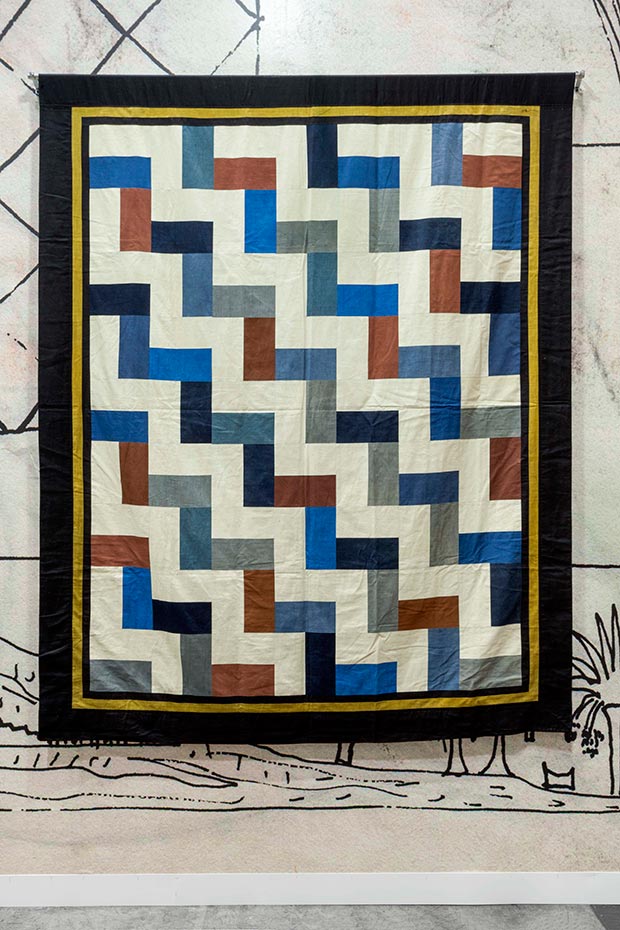
Sabrina Amrani at Art Basel, Miami Beach 2018 (Dec 6-9, 2018) ‘Textile Panel Patterns’ by Chant Avedissian
Dec 02, 2018 EVENT, Art Fair

The presentation is a selection of textile works executed by the artist in Cairo (Egypt) in between 1980 and 1990, which constitutes the whole period that corresponds with Chant Avedissian's exploration into the textile medium.
Islamic artistic expression is predominantly a decorative art form. Geometric shapes, calligraphy and organic patterns make up the three non-figural types of decoration in Islamic art. The geometrical and organic designs usually feature repeated and overlapping polygons and circles, or of rhythmic patterns of interlacing foliage and tendrils. The Occidental preoccupation with figuration and the human body has seemingly made Islamic and Western art mutually exclusive, or at least inherently contradictory. However, the emergence of Western art movements at the onset of the twentieth century, such as abstract—specifically Constructivist—art, has led us to re-evaluate Islamic art and its relation to Western aesthetic developments.
 Chant Avedissian, Color and black squares, 1982-1989. Hand-dyed cotton. 205x257 cm / Courtesy of Sabrina Amrani Gallery
Chant Avedissian, Color and black squares, 1982-1989. Hand-dyed cotton. 205x257 cm / Courtesy of Sabrina Amrani Gallery
 Chant Avedissian, Grey rectangles, 1982-1989. Hand-dyed cotton. 234x428 cm / Courtesy of Sabrina Amrani Gallery
Chant Avedissian, Grey rectangles, 1982-1989. Hand-dyed cotton. 234x428 cm / Courtesy of Sabrina Amrani Gallery
Both art forms have a lot in common; and although Constructivism as such might not directly be indebted to geometric Islamic art, the similarities between the two do exist. Modern and contemporary abstract Oriental art, such as Avedissian’s, is in turn very similar to Constructivist painting and its later counterparts, in spite of Avedissian’s ideal of an unaffected and ‘unpolluted’ modern and contemporary ‘Eastern’ art practice. Can any artist avoid the influences of the past? When we look at Lyubov Popova’s and Varvara Stepanova’s fabric and textile fashion designs of the 1920s, for instance, we notice a striking resemblance to Avedissian’s own textile panels (1980-1990) and pattern stencils (1991-1999), as well as his costume sketches and drawings. There are ample instances that illustrate the resemblances between Islamic and Russian Constructivist designs.
 Chant Avedissian. Persian tiles, 1982-1989. Hand-dyed cotton. 165x210 cm / Courtesy of Sabrina Amrani Gallery
Chant Avedissian. Persian tiles, 1982-1989. Hand-dyed cotton. 165x210 cm / Courtesy of Sabrina Amrani Gallery
 Chant Avedissian, Pharaonic triangles, 1982-1989. Hand-dyed cotton. 200x240 cm / Courtesy of Sabrina Amrani Gallery
Chant Avedissian, Pharaonic triangles, 1982-1989. Hand-dyed cotton. 200x240 cm / Courtesy of Sabrina Amrani Gallery
For many years, Avedissian has been concentrating on patterns. Moving between modernity and tradition, his intricate artistic and aesthetic research combines elements of Constructivism with features of Islamic art, generating surprising relationships between Constructivist art and ancient calligraphy. These works are characterized by repetition and a variety of patterns, rhythms and motifs. Repetition arises from the frequent recurrence of the same object, colour or shape in a regular, rectilinear or cyclical way, to create interest, movement, harmony and unity. A pattern is a combination of distinct elements or shapes that are repeated in a systematic arrangement, such as mosaics, lattices, spirals, meanders, waves, symmetries and fractals. Rhythm is a variegated repetition of different elements, which can be random, regular, alternating, flowing, increasing or diminishing, like notes in a score. In visual rhythm, the motifs become the beats. Motifs originate from units of patterns, or combinations of elements, such as stamps, tiles, building blocks and modules. Motifs can be arranged in a plurality of sequences, be they repetition, rhythm or pattern, as in the textile works in this presentation.
 Chant Avedissian, Squares, 1984. Hand-dyed cotton. 230x410 cm / Courtesy of Sabrina Amrani Gallery
Chant Avedissian, Squares, 1984. Hand-dyed cotton. 230x410 cm / Courtesy of Sabrina Amrani Gallery
.jpg) Installation shot of the exhibition “Chant Avedissian. A Levantine Heading East†at Casa Ãrabe Madrid (2017) / Chant Avedissian. Panel A and Panel B, 1989. Hand-dyed cotton. 75x350 cm. each / Courtesy of Casa Ãrabe/Laura M. LombardÃa
Installation shot of the exhibition “Chant Avedissian. A Levantine Heading East†at Casa Ãrabe Madrid (2017) / Chant Avedissian. Panel A and Panel B, 1989. Hand-dyed cotton. 75x350 cm. each / Courtesy of Casa Ãrabe/Laura M. LombardÃa
Avedissian’s work testifies to his constant intellectual and artistic struggle against what he calls the ‘Western, colonial and imperialistic influence on Eastern art’. He strongly opposed the general tendency to evaluate the latter by European or Western standards. As he grappled with Western influences, his art became the result of the fraught tension between East and West.
Comments
Add a comment